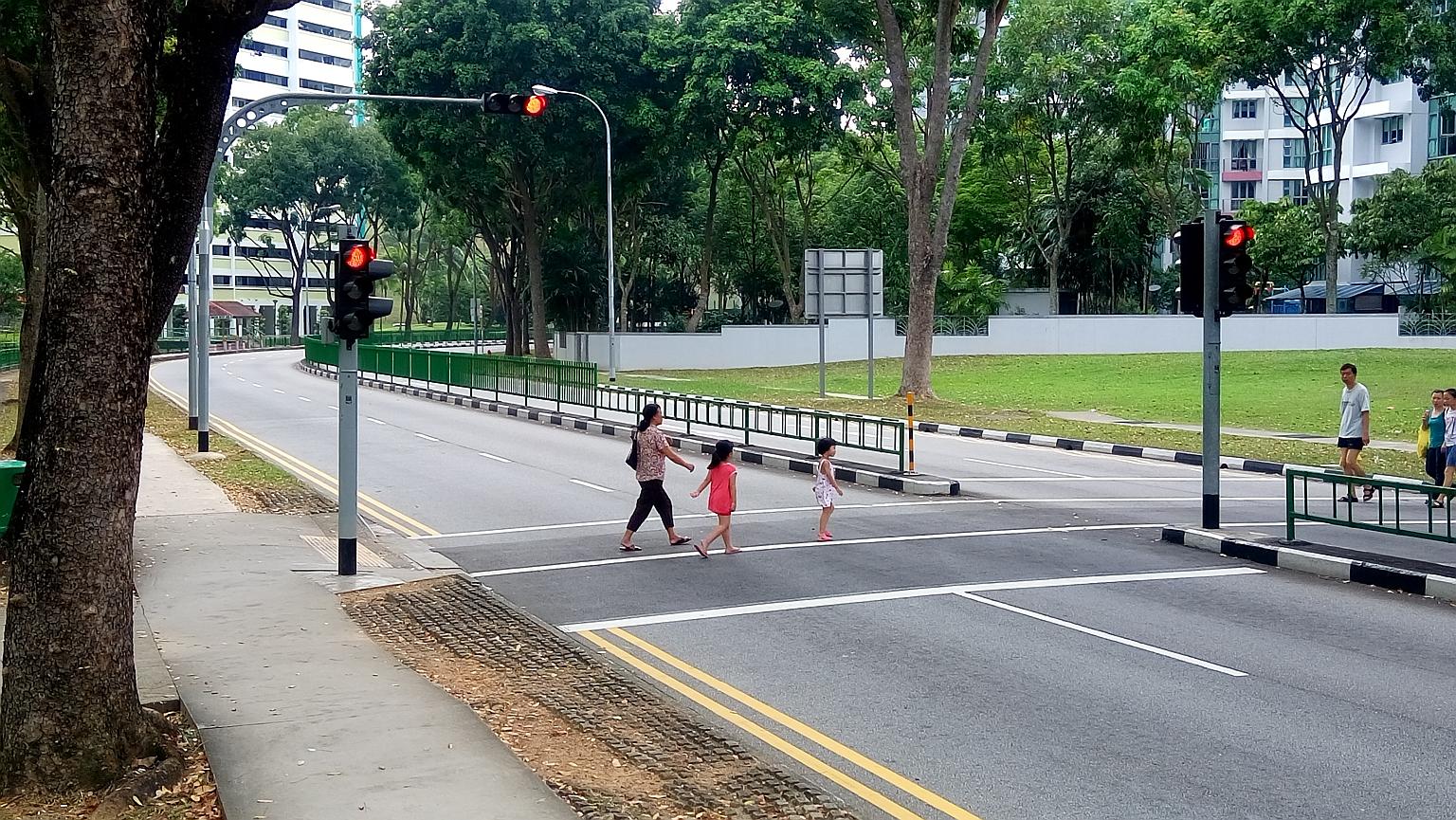Pedestrians with right of way 'must still share responsibility'
Appeals Court rules injured victim 15% to blame although lights were in his favour
Sign up now: Get ST's newsletters delivered to your inbox

The lights were green in Mr Li's favour when he was knocked down by a cab driver in 2011 at the crossing in Bukit Batok West Avenue 5 (above). In 2014, the High Court found the driver fully to blame for the accident.
ST PHOTO: LAU FOOK KONG
Follow topic:
Even if the lights are in their favour, pedestrians still have to check for oncoming traffic.
This was held in a rare 2-1 Court of Appeal decision in which the Chief Justice dissented.
Judge of Appeal Chao Hick Tin and Justice Quentin Loh, who were in the majority, explained their reasoning by highlighting a Highway Code rule that requires pedestrians to be on the alert.
"Pedestrians should take charge of their own safety," the court said in judgment grounds issued on Thursday, and decided the injured victim in the case before it was 15 per cent to blame despite having the right of way.
Chief Justice Sundaresh Menon, who wrote a separate view explaining his objections, said the ruling means "that pedestrians will no longer be able to take comfort in the fact that they are crossing at a point controlled by a police officer or by traffic lights".
"They will have to safeguard themselves in precisely the same manner in such circumstances as if they were jaywalking."
In Oct 2014, the High Court had found taxi driver Asnah Rahman, who was being sued by the victim, fully to blame for the accident which seriously injured then 21-year-old national serviceman Li Jianlin at a pedestrian crossing in Bukit Batok West Avenue 5.
On June 2, 2011, at about 10pm, the lights were green in his favour when he was knocked down. He suffered serious head and hip injuries, and was hospitalised for three months.
For dangerous driving, Madam Asnah, 59, was also fined $2,400 and disqualified from driving for six months by a district court in 2012.
The cab's insurer appealed, with lawyer Anthony Wee arguing that Mr Li should be 35 per cent to blame for failing to check for approaching traffic as he crossed the second half of the dual carriageway which had a centre divider.
Mr Wee cited rule 20 of the Highway Code, which states: "Where a pedestrian crossing has a central refuge, each half is a separate crossing and you should treat it as such."
Mr Li's lawyer Eric Liew countered that the pedestrian had no duty to continuously look left or right when the signal lights were in his favour. The victim, who also suffered amnesia, could not recall if he was on the lookout when he crossed the second half of the road.
At issue was whether Mr Li, now a polytechnic student, had a responsibility to take care of his own safety.
The court's majority pointed to rule 22 of the Highway Code.
It requires pedestrians at a light controlled crossing to wait on the footway until the traffic in front has come to a standstill. This means those on foot should keep a lookout for errant motorists regardless of how long the lights have turned in favour of the pedestrian, wrote Justice Chao. This was because there was risk of the motorist having fallen asleep from fatigue, driving while drunk and using a mobile phone.
The court noted it takes no more than a split second to see if it is safe to cross the road. But it was also stressed that this does not mean motorists should be less vigilant.
"All we are saying is that a pedestrian should bear a small portion of the shared responsibility," said Justice Chao.
The Chief Justice argued the litmus test should be whether Mr Li acted reasonably, with the amount of self-care that a normal person would have exercised in his case.
He asked if it was reasonable to expect Mr Li to guard against a driver who drove "as if there was no traffic light and no controlled pedestrian crossing there at all". Only if the answer was "yes" could one consider if there were extra steps Mr Li could have taken.
He pointed out there was no footway in the middle of the road as a divider, making rule 20 and rule 22 irrelevant. He also found Madam Asnah had not shown that Mr Li failed to check for traffic when he approached the centre of the crossing.
The judgment means that when the case returns to the High Court in September to assess the damages payable to Mr Li, the sum will be discounted by 15 per cent.
Correction note: This article has been edited for clarity.

